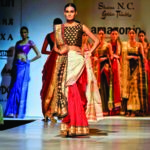Fashion is more than just clothing—it is a reflection of our values, beliefs, and the societies we live in. Throughout history, fashion has played a crucial role in shaping cultural movements, expressing personal identity, and challenging social norms. From the lavish dresses of royalty to the streetwear of modern youth, fashion has always been a powerful tool for self-expression and cultural influence.
In this article, we’ll explore how fashion impacts culture and identity, and how clothing choices can convey everything from political statements to social status, while reflecting the time and place in which they are worn.
1. Fashion as a Form of Self-Expression
At its core, fashion is a way for individuals to express themselves. What we wear can communicate our personality, interests, and even our mood without us saying a word. From vibrant colors to minimalist styles, fashion gives us the opportunity to craft an identity that aligns with how we see ourselves or how we want to be seen by others.
Personal Identity: Clothing choices can reflect personal beliefs, creative interests, or even political views. A punk rock t-shirt, for example, can signal an affinity for rebellious music and counter-culture, while a tailored suit may indicate a more formal, professional identity.
Cultural Identity: Fashion can also highlight one’s cultural heritage. For instance, traditional attire like kimonos, saris, or dashikis celebrates cultural roots, and wearing them helps preserve and honor those cultural legacies.
2. Fashion as a Reflection of Society and Social Change
Fashion is often deeply intertwined with the cultural and political movements of the time. Trends are born out of social climates, reflecting shifts in values, ideologies, and societal changes. For example, the flapper dresses of the 1920s symbolized women’s increasing liberation and desire for independence, while the power suits of the 1980s represented women’s entry into the corporate world.
Rebellion and Resistance: Fashion has also served as a form of rebellion and resistance. The punk fashion movement in the 1970s, with its ripped jeans and leather jackets, was a rejection of mainstream norms, while the “Black Power” fist symbolized pride, unity, and defiance within the Black community.
Social Movements and Fashion: In recent years, fashion has embraced activism, with brands using their platforms to advocate for change. From the “Me Too” movement’s empowering messages to clothing lines that promote gender neutrality, fashion is becoming a louder voice for societal progress.
3. Globalization and Cross-Cultural Influences
With the rise of global communication and travel, fashion has become increasingly influenced by cultures from all around the world. Globalization has led to the blending of traditional and contemporary styles, and what was once considered regional fashion is now seen and worn worldwide.
Cultural Fusion in Fashion: Designers are drawing inspiration from diverse cultures, incorporating elements such as African prints, Asian-inspired cuts, and European tailoring into their collections. This fusion has led to a broader acceptance of diverse aesthetics, creating a more inclusive global fashion scene.
Cultural Appropriation vs. Appreciation: However, this cross-cultural influence has sparked debates about cultural appropriation—where elements of one culture are used by another, often without respect or understanding of their significance. The fashion industry is learning to navigate this delicate balance, recognizing the importance of respecting cultural heritage while embracing multiculturalism.
4. Fashion as a Symbol of Status and Class
Fashion has long been associated with wealth, status, and social class. From royal families in extravagant gowns to modern-day luxury brands, the clothing we wear can often signal our socioeconomic status. In many ways, fashion has created a hierarchy, where the latest designer outfits or rare fashion items are symbols of exclusivity and privilege.
The Power of Luxury Brands: High-end fashion brands like Louis Vuitton, Chanel, and Gucci carry a sense of prestige, and owning these items often signals that the wearer has reached a certain level of financial success. Similarly, the rise of “fast fashion” has made trendy clothing more accessible to a broader range of people, further blurring the lines of class distinctions.
Fashion as a Form of Social Mobility: On the other hand, fashion can also be a way for individuals to break into higher social strata. By adopting particular styles or wearing luxury items, individuals may aspire to embody a more elevated status, as fashion has the ability to reshape perceptions and create new identities.
5. The Digital Revolution: Fashion in the Age of Social Media
In today’s digital age, fashion is no longer confined to the runway or the streets—it’s now an integral part of our online lives. Social media platforms like Instagram, TikTok, and Pinterest have become powerful tools for both emerging and established designers to showcase their collections, and for individuals to express their personal style.
Influencers and Fashion Trends: Social media influencers have transformed the way fashion trends are spread. A single post from a popular influencer or celebrity can send a trend viral, influencing millions of people across the globe. Platforms like Instagram have allowed for the democratization of fashion, where even the most casual of observers can have their style choices recognized and shared.
Virtual Fashion and Avatars: The rise of virtual fashion is also gaining momentum. Digital clothing, worn by avatars in online spaces or used in digital fashion shows, is becoming an increasingly popular part of the fashion landscape. The future may even see virtual clothing and “dress-up” as a viable market for digital goods, expanding fashion beyond the physical world.
6. Fashion and Gender: Breaking Traditional Boundaries
Fashion has always played a significant role in challenging traditional gender norms. For centuries, clothing was heavily gendered, with rigid rules about what men and women were “supposed” to wear. Today, those lines are becoming increasingly blurred.
Gender-Neutral Fashion: Designers are moving away from binary gendered clothing, creating collections that are gender-neutral and inclusive. Celebrities like Harry Styles, who wear skirts and dresses, are helping to normalize these fashion choices for both men and women, inspiring a more fluid approach to self-expression.
Androgynous Fashion: The rise of androgynous fashion is another reflection of how society is shifting toward more inclusive perspectives on gender. It challenges the conventional ideas of masculinity and femininity, offering a broader range of styles that cater to personal identity rather than gender conformity.
Conclusion
Fashion is a mirror of culture, identity, and social change. It reflects the values and movements of the times, and plays a central role in shaping the way we perceive ourselves and others. As fashion continues to evolve, its ability to break down cultural, social, and gender boundaries will only grow stronger. By embracing diversity, sustainability, and self-expression, fashion will continue to be a powerful force that influences our identities and our world.




